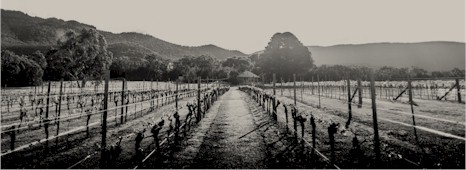


Halls Gap Estate represented part of the second coming of the Victorian wine industry, which had seen very little new plantings since the turn of the century. The region had always had a pedigree for great wines with the first vineyards in Grampians being planted at Bests & Seppelts, in the early 1860s. The Halls Gap property had long been a respected grower for many of the country’s great wineries, Seppelts and Penfolds, until 1996, when it was bought by the famed Victorian winemaker, the late, great Trevor Mast. It remained a staple of Mount Langi Ghiran until acquisition by Aaron Drummond of Circe Wines in 2013.
Higher elevation, old vines and ancient rocky soils have kept yields low but always delivered incredible quality. Twenty three acres under vine with a predominance of Shiraz, with a small paddock of old Riesling and Cabernet Sauvignon. The single vineyard wines of the estate are labelled Fallen Giants in reference to the dreamtime stories about the creation of the mountains. According to legends of the original owners, the Djab Wurrung and Jardiwadjali people, Geriward (the Grampians) was created by the great Ancestor spirit Bunjil, who often took the form of a great Eagle. The ranges were then further shaped by Tchingal a Giant ferocious Emu, who split the mountains with his fierce kick.
The majority of Halls Gap Estate is fourteen acres of Shiraz, a cooler site at higher elevations of 260 metres above sea level and east facing in aspect. The soils are red clay loams, dating back 380 million years ago to the Devonian period. As the soils are old and weathered the vines are naturally low yielding.
The wines of Halls Gap are all about the quality of fruit, harvested off a very special vineyard, planted to an exceptional site in the challenging elevated terroirs of Victoria's western districts. Blessed with amazing views over the estate vineyards and greater Grampians region, the Halls Gap cellar door is the perfect place to experience great wine.

























